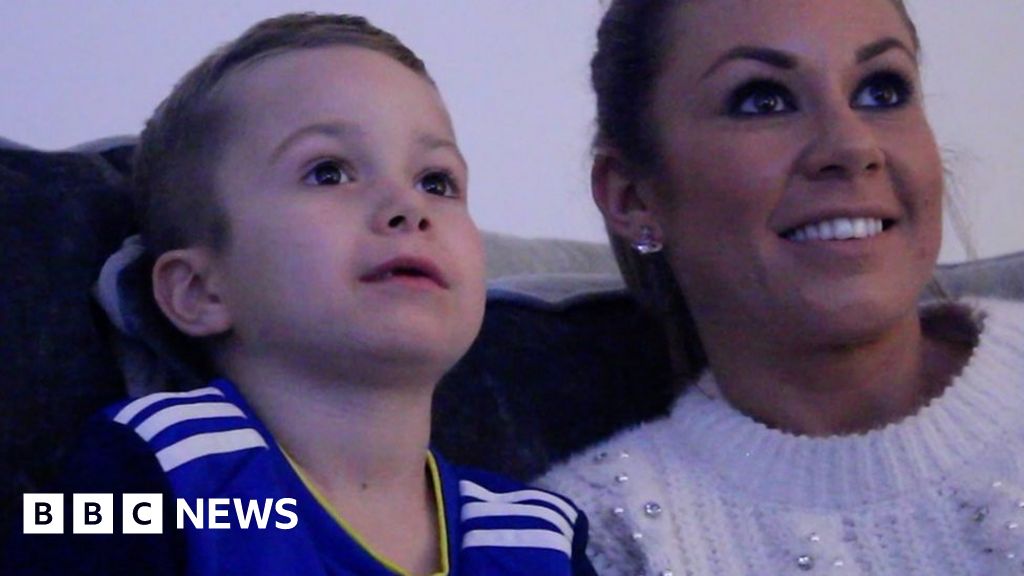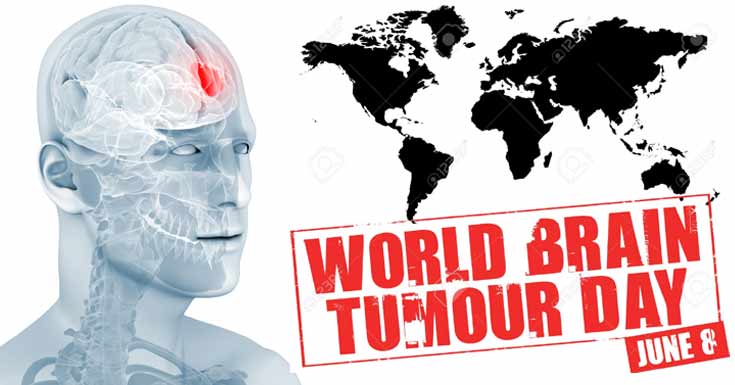Brain Tumor:-
Over and excessive growth of cells creating a mass in the brain is called a brain tumor. The tumors in the brain could be either cancerous or non- cancerous. Non- cancerous brain tumors are called benign while cancerous brain tumors are called malignant tumors.
If the tumor in the brain originates in the brain itself then it is called a primary brain tumor. Sometimes cancerous development of cells in other parts of the body can spread to the brain then it is called secondary or metastatic brain tumors.
Malignant brain tumors grow rather fast and affect the normal functions of the body and if proper medical care is not provided in time the life of the patient could be in danger. However, the chances of brain cancer in one's lifetime are very low.
Types:- In the normal process old cells die out and new cells are formed to ensure growth and repair of the body tissues. Sometimes new cells start forming without the requirement thus creating extra cells that form a mass of tissues called a tumor.
Types of Brain Tumor:-

Primary Brain tumors:-
Primary brain tumors are benign and they are named after the part of the brain or type of cells from where they have originated. These tumors are non-cancerous and they normally do not spread to surrounding tissues. Their chances of invading other parts of the body are very rare.
Primary brain tumors can compress the surrounding tissues or sensitive parts of the brain causing serious health issues. Forming from glial cells of the brain gliomas brain tumors are most common. Types of gliomas are -
1. Astrocytoma.
2. Ependymoma
3. Oligodendroglioma
4. Brain stem glioma
Apart from the above there many other types of primary brain tumors which are formed from cells other than glial cells.
Malignant Brain Tumors:-
Malignant brain tumors have cancerous cells that's why they are called brain cancer. These brain tumors are very serious and they are life-threatening. These tumors have a tendency to grow fast and damage the surrounding tissues. These tumors tend to spread to other parts of the brain and sometimes the spinal cord.
Secondary Brain Tumors:-
Secondary brain tumors are formed when cancerous cells from other parts of the body like breast, lung, kidney, etc enter the lymphatic system and blood vessels and circulating through the blood enter the brain and stay there. Since these cells have a tendency to grow excessively, they become malignant and start damaging nearby healthy brain tissues.
Brain Tumor among Children:-
Brain tumors also occur in children of any age. The recovery and chances of survival depend on the type of tumor, it's spread, it's location, etc. Age and general health of the child patient has an important bearing on his or her survival.
Symptoms of Brain Tumor:-
Type, size, and location of the tumor in the brain determine the symptoms experienced by the patients.
Headache:-Headaches are very common symptoms of brain tumors. Tumors put pressure on sensitive nerves and blood vessels which interrupts their normal functions. The patient experiences a new type of headaches and pain such as following.
1. persistent headache
2. intense pain when the patient gets up in the morning.
3. Vomiting tendency.
4. pain worsens when the patient coughs, changes positions, or exercises.
5. Sometimes neurological symptoms are experienced.
Brain tumor patients also experience the following -
1. Memory loss
2. Change in the ability to taste, smell, and hear.
3. The gradual loss of normal functions of the body.
4. Trouble in speaking.
5. Difficulty in body balance.
6. Slowly losing control over body movement.
7. Numbness or tingling in any part of the body.
However, simply having headaches does not mean cancer. A variety of reasons are responsible for headaches.
Seizures:-
A seizure is generally considered the first sign of brain tumor as the tumor puts pressure on nerve cells which disturbs the electrical signals leading to seizures. However, seizures are not always the effect of brain tumors.
Brain Tumor Grades:-
Brain tumors are graded on the basis of how cells look under a microscope.
1. Grade 1 brain tumor -
A slow-growing cell that looks like just normal brain cells. The tissues are benign.
2. Grade 2 brain tumor -
Tissues are malignant. Cells look a little bit less normal.
3. Grade 3 brain tumor -
The brain cells are very different from normal cells and their growth is faster. The tumor is malignant.
4. Grade 4 brain tumor -
The brain cells are completely abnormal and they multiply quickly.
Causes:-
The causes of brain cancer are largely unknown but certain risk factors do have some effect.
1. Ionizing Radiation:- Exposure to high dose X-rays can increase the risk of a brain tumor.
2. Family History:- Though there is little chance of brain tumor running in a family but certain inherited disorders can increase the risk.
It is believed that too much exposure to cell phones, head injuries, exposures to certain chemicals at the workplace may cause brain tumors but it is debatable as medical fraternity has no consensus in this regard.
Diagnosis:-
Neurologic examination:-
Bodily functions of the patient are examined by the doctor like hearing, alertness, coordination of organs, reflexes, eyes, etc to ascertain if they are working normally.
MRI:-
The picture is taken of the inside part of the brain to find if there is any abnormal growth like a brain tumor.
CT Scan:-
A series of detailed pictures of the head is taken. Contrast material is injected through arms that make abnormal growth visible.
Angiogram:-
Under this procedure, a dye is injected into the blood vessel which makes the brain tumor more visible on an X-ray.
Spinal Tap:-
Fluid from the brain with the help of a needle is taken out to conduct a laboratory test to find out the presence of cancerous cells or any other abnormalities.
Biopsy:-
It is the most trusted way of diagnosing brain tumors. Some tissues are removed from the brain and they are put to a laboratory test to find any cancerous growth of cells or any other abnormalities. A biopsy is also very important to decide the treatment plan.
Treatment:-
Removal of Brain Tumor Through Surgery:-
Removal of the tumor through surgery is widely in practice. Cancerous cells are surgically removed from around the brain.
Radiotherapy:-
Radiotherapy is applied to target the brain tumor with alpha and beta rays to shrink the size of the brain tumor. Tumor cells are eliminated carefully without causing any harm to surrounding healthy tissues.
Chemotherapy:-
Chemotherapy is also one of the options but due to its toxicity, side effects, and uncertainties it is less preferred. It is generally given to young children as radiation therapy may have a harmful effect on their brain development.
This blog only aims to create general awareness among people so that they can get timely treatment. Only an expert medical professional should be consulted and only his opinion matters.



Comments
Post a Comment